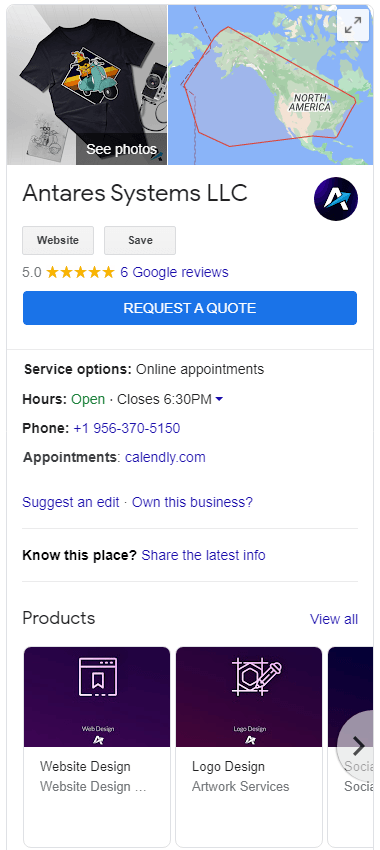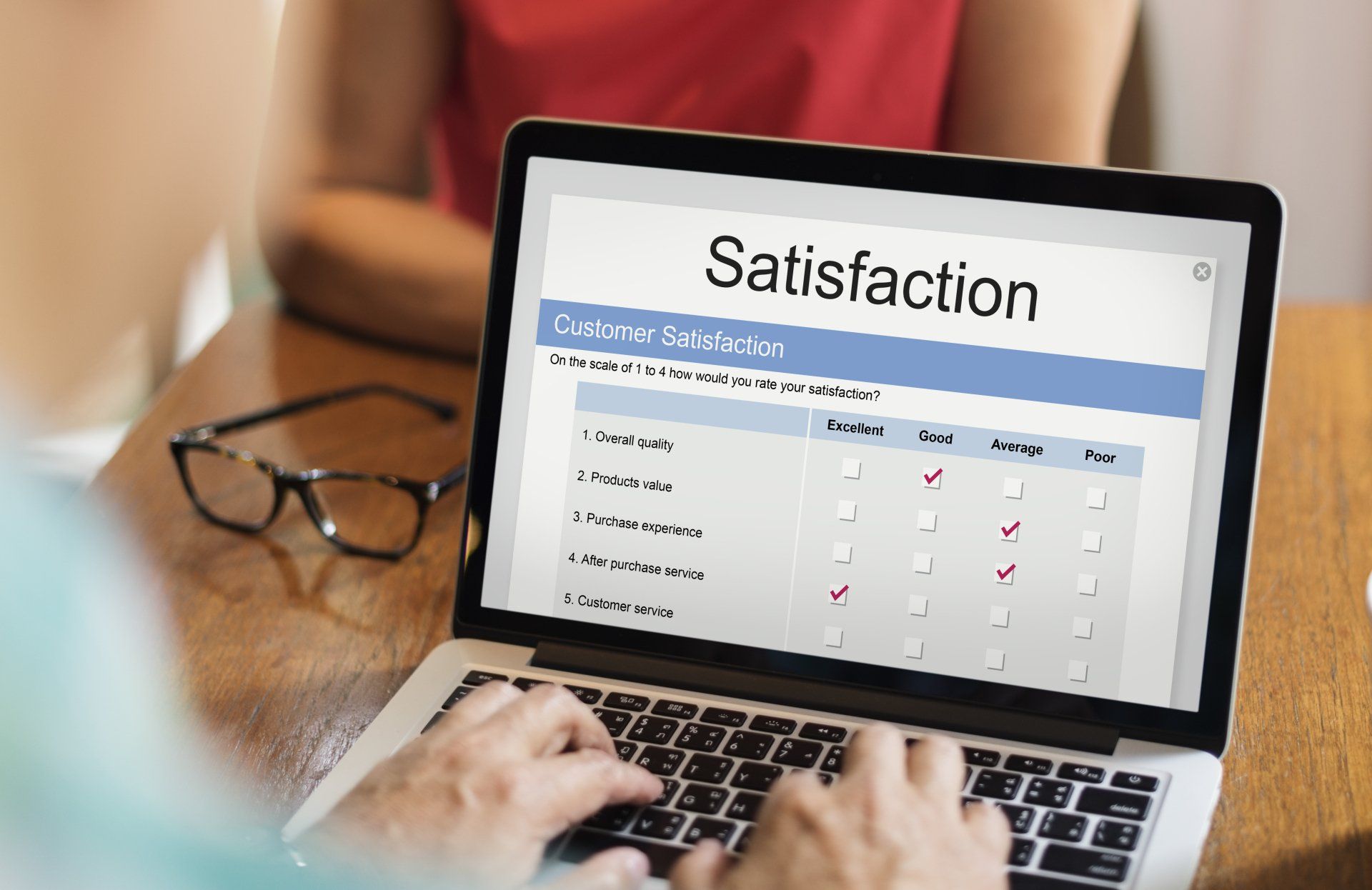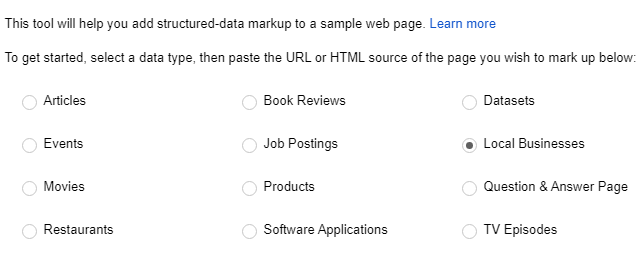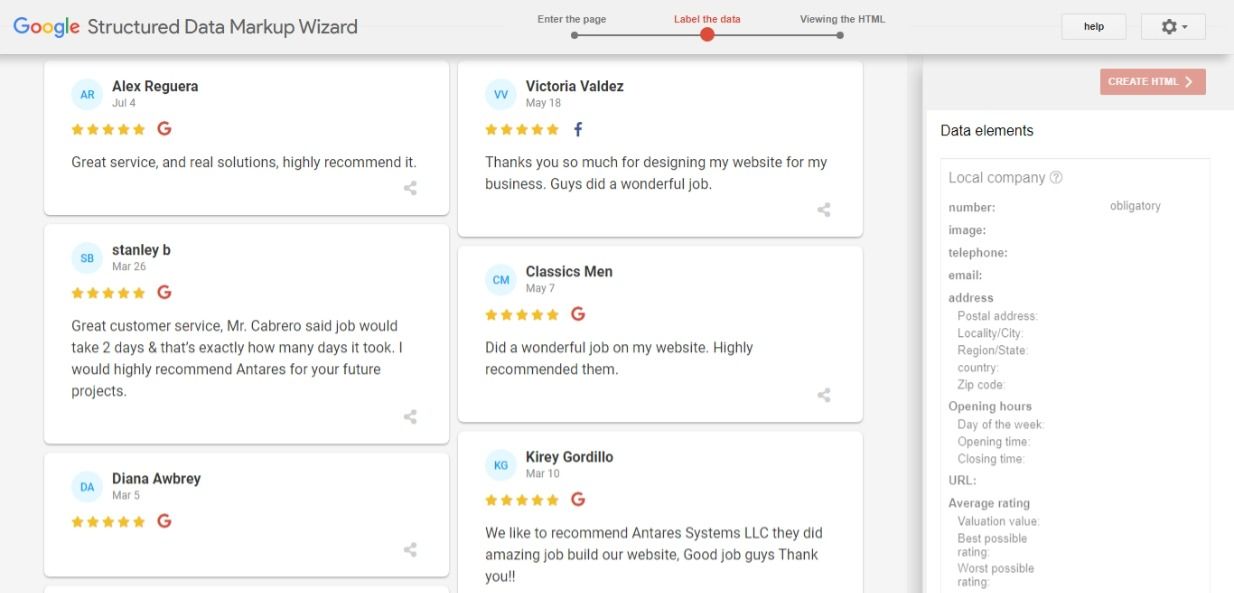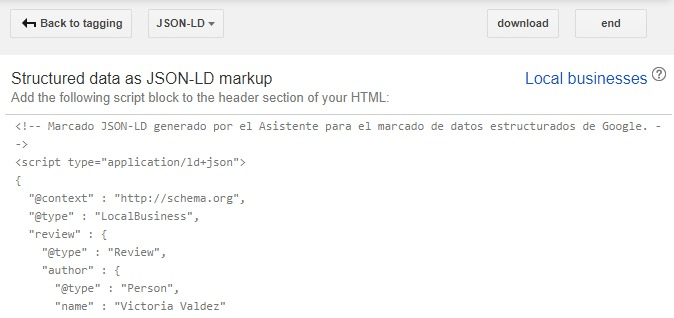Local Search Engine Optimization: A guide

Local Search Engine Optimization: A Complete Guide for Businesses
As you may know, ranking at the top of the search results is a goal to achieve for many businesses and brands. However, there are several steps to follow before this, and one of them is local search.
Local SEO is the basis of good rankings and the discovery of our services and products, especially when it comes to small businesses. According to
99 firms,
46% of all Google searches are local. As you can see, that's about half of all searches.
It means that optimizing for local searches is a must. That's why in this blog we bring you a guide to Local Search Engine Optimization, so keep reading to learn more!
What is Local SEO?
Local Search Engine Optimization, or Local SEO, is the optimization to appear in local search results. It is a sub-branch of SEO as such and is oriented mainly to businesses with physical locations, traditional services, and small entrepreneurs and businesses.
Local SEO is made up of many areas to work on, and it helps tremendously in local discovery. These go from setting up your Google listings to creating word of mouth conversations among customers to spreading the word about your business, services you offer, and creating a solid reputation among your prospects and competitors.
Let's start with a fundamental part of Local SEO:
Google.
Create Local Google My Business Page
As you may know, Google has specific tools for businesses. After all, Google currently holds 92.27% of the total search engine market share.
In one of our previous blogs:
Local SEO with Google My Business: Basic Guide, we mentioned step by step on how to set up your Google my business account to create a detailed listing of your business.
In case you haven't read our blog, here is a summary of the steps to follow:
- Create or link your Google account.
- Register your business.
- Add your business information.
- Upload your logo.
- Create, register, and submit feeds.
- Keep updating your business.
Having this listing is crucial so that when they search for your business locally, it looks like this:
It gives professionalism to your business, as well as priority in local searches. Remember that Google relies primarily on location when offering search results, especially when searched from mobile devices. Likewise, users tend to do research and comparison before making a purchase or hiring a service. Therefore, having all the relevant information, as well as images of your establishment and what you offer, is crucial when it comes to giving your business an online presence.
On the other hand, when creating your Local Google My Business Page, you should consider the following points:
- When you want to register your business, it may already appear indexed. It means that your business already has some presence, which is good!
- Based on the above, there are times when businesses already have a Google listing, even if you have never registered it. In these cases, you can claim the business as yours.
- Google relies heavily on location to show results locally, so detailing your business as much as possible is crucial to ranking first.
- Maintaining consistency in your data is relevant, so if you create or update your Google My Business Page, make sure the information matches the info on other sites.
- While you can do this process manually, today, there are options to help you automate or manage these listings. At Antares Systems, we can help you with this by offering Local SEO and Online Reputation Management packages.
Local Listing
It goes hand in hand with Google My Business. By creating your Google My Business page, you are also creating a listing. Orienting it to be local was discussed in the previous point.
However, Google is not the only place where you can create a local listing for your business. The most common ones are usually:
- Yelp
- Better Business Bureau
- Yellow Pages
There are also industry-specific listings, depending on where your business is located or related. These are of utmost importance for local SEO. An example of this is, for example, being from Mcallen, having your business listed in the Mcallen Chamber of Commerce. Here, a small listing of your business information is created, such as an address, phone number(s), owner's name(s), and website.
So..., What should my local listing include?
Easy; it should carry any information relevant to your business, from basic contact information to social media. Here are the basics:
- Business name/title: Unless your business name legally has the name of your location (e.g., Antares Systems McAllen), you should not include it in your listing name. The same goes for multi-practitioner businesses, in-container, or co-located businesses. On the other hand, if your business has different departments (as in a hospital), you may choose to create a listing for each one of them.
- Address: It should be your actual physical location and should be as detailed as possible. If you offer a home service, but in the local area, it must be specified at the time of creating your listing.
- Phone number: This is one of your principal means of communication with the customer. If you have alternate numbers, they should also be included in the list.
- Description: What do you do and offer, and everything relevant about your business.
- Social profiles: Link any social network, this way you will always keep in touch with your audience!
- Images: Whether it's about your business or what you offer, it's always good to add images for your audience to have a reference.
- Reviews: These help you build your online reputation. Positive or negative, reviews still matter. Google Listings don't let you hide bad reviews. However, there are ways to improve your online reputation. (hint: we can help you with that)
- Website URL: It must point to your main business website and not to social networking or third-party sites.
However, you can still view the listings of similar businesses to get an idea of what information is relevant or necessary for your listing. Regardless of whether you manage your listings manually or hire a listing management service, something important is that these listings are crucial to your Local SEO.
Improve website loading speed
Many factors compose and affect the speed of our website. According to Unbounce, 70% of users say that the loading speed of a site is a determinant in whether they buy or not. Improving your load time by 0.1s can boost conversion rates by 8%, according to Deloitte. That is why the speed with which our website renders is crucial.
In our previous blog, we talked about the Core Web Vitals and how they greatly influence the user experience. One of these Vitals was specifically aimed at the loading time of a website.
In a nutshell, load speed refers to the total time it takes for a website to fully load the elements that should be visible on the screen without scrolling down.
Many are the elements that influence this, from the elements of our website to the device and internet connection quality of the end-user. Although we cannot control the latter, we can help our site be optimal for any of these variables. Among the basics we can do is:
- Optimize images and videos, using compact formats but maintaining quality.
- Eliminate unnecessary elements from our website
- Keep texts as optimized as possible, which means keep them short and consistent.
- Create a mobile-friendly website
Did you know that almost 90% of people think that the mobile website version should be good or better than the desktop version?
This is why in recent years, there has been so much emphasis on the development and improvement of mobile applications and sites. As time goes by, mobile usage is an everyday thing, so keeping a responsive and fast-loading mobile-friendly website is something to prioritize.
Whether you manage it yourself or hire someone to design or improve your website to be mobile-friendly, you should ideally consider the following when designing your mobile site:
- Design it for big fingers. Clicking by mistake on something because another element was too small is annoying!
- Optimize descriptions and alternative titles. This way, your website will have relevant information without sacrificing quality.
- Don't omit responsive elements! These help Google recognize your site as mobile-friendly, so it will rank you better when searching on mobile devices.
Collecting genuine online reviews
As we mentioned at the beginning of this blog, part of Local SEO is user reviews. A business with a good score in their listings will rank higher than those that don't.
There is a right and wrong way to generate reviews. If you've thought about incentivizing or buying Google reviews, you may not like the consequences, as search engines penalize businesses that don't have authentic reviews.
Some ways to get them are:
- Ask for a Review After Purchase
- Feature Google Reviews on Your Website
- Create an Email Campaign
- Feature Google Reviews on Social Media
- Get Involved in Your Community
If you want to know more details about this, you can check our blog: 4 Ways to Generate Google Reviews and Your Online Reputation.
Learning how to generate Google reviews from local customers also will help your business spread the word through your community. As more customers leave positive ratings and reviews, you'll probably notice more traffic to your storefront and website.
Also, in case you have less than favorable reviews, don't worry! There are ways to highlight positive comments about your business. We can help you with your
online reputation.
Implement Schema markup
Schema markup is a new way to boost SEO, whether general or local.
Schema markup is a semantic vocabulary (code or microdata) that is added at the time of creating your website. All this is to add some specific functionality to your site. By this, we mean that they show data that helps the browser to understand what your content is about, and consequently, to appear in search results specific to what the user is interested in.
As you might expect, Google has a specific tool to display data of these types.
The Structured Data Markup Helper is a tool that helps you create your HTML code for use on your website. As you can see, it allows you to choose from several categories (among them, local business) and helps to display additional information related to a search result.
If you want to see a list of all the categories you can markup, you can check it out at this
link.
Schema.org is a joint project specially designed to improve the user experience. It is similar to Facebook's Open Graph. Currently, Schema.org is mainly supported by Google, Bing, Yahoo!, and Yandex.
Here is a short explanation of how to perform Schema Markup:
- On the main page, select the type of data to markup.
- Then enter the URL or HTML source of the page you want to markup.
- In the next step, it is time to markup the data elements. These vary depending on the category you are going to markup but usually include name, description, reviews, and ratings.
- Once you have selected the desired data, you can proceed to display the HTML. This can be downloaded for your use, however, it can only be implemented by someone skilled in this. This is done by modifying the HTML source of the web page using the highlighted text to indicate what to add.
Consistent NAP settings
The NAP settings may sound complicated... but it's not! NAP stands for Name, Address, Phone, which are basic elements when talking about a business.
These data are the most relevant when searching for a business since they are the identity and the way of contact with your audience.
So, when we refer to consistent NAP configurations, we are referring to the consistency of all this data. These are usually on websites, listings, social networks, etc. With consistency, we ensure that the data always appears the same in whatever result it appears in, regardless of the site it is displayed on.
- For example, if our company number has the following format: XXX-YYYY-ZZZZ, then this is how it should appear on all sites.
- The same goes for our email address, which should always be the same and in case of changes, update it.
- In the case of the address, if it follows the scheme of street/number/city/zip code, then the data must appear in that order on any site or social network where it is included.
On the other hand, if you have alternate data but are in operation, the idea is to mark it as such, alternate data. Likewise, they should all follow the same format to maintain data consistency, from search results to Google listings.
As we saw with the Schema Markup, this data can be displayed in search results with the Google tool by pulling the HTML code and implementing it in our website source code.
Optimize “near me” keywords
As an agency oriented to help small businesses, we know that "near me" is recurrent when doing local searches. As mentioned at the beginning of this blog, nearly half of all searches are local. That is why combining all the above points is crucial to expand and improve your local discovery.
Here we include a small summary of the points to consider to improve your local SEO, plus
two extra tips that can help you:
- Create Local Google My Business Page: It is your main face in google searches. Keeping it updated is key to your visibility.
- Local Listing: Besides Google, there are more listings where you can include information about your business, this way you will create a stronger online presence.
- Improve website loading speed: Key to an optimal user experience, which translates into interested prospects and a lower bounce rate.
- Create a mobile-friendly website: Hand in hand with user experience. It is key in local searches since most of them are done from mobile devices.
- Collect genuine online reviews: These give users a reference of what people think about your services, maintaining a good reputation reflected in your conversions.
- Implement Schema markup: These are small pieces of extra data listed in your search results, giving users additional information in an effortless way.
- Consistent NAP settings: These are the main elements of your business. Keeping this data consistent is crucial for you to be distinguished and contacted more easily.
Bonus Tip 1
Effective optimization of "near me" keywords: This brings us back to the starting point of this last section. The implementation of these keywords helps us to be discovered by more people in our location. Although these keywords must be there for us to be visible, they should not be misused.
The phrase "near me" is rarely easily applicable, as it can be unnaturally read. It is only preferentially to some businesses, such as:
- Hotels
- Movie theaters
- Restaurants
- Electronic stores
- Boutiques
- Solopreneurs
As you can see, although it can be a detail that can improve your positioning in local search engines, it is best not to force it and focus on other details. Even so, you can modify your descriptions or texts to include this phrase fluidly. It is also applicable to all the previous points such as listings and social media, so you have many areas to experiment with.
Bonus tip 2
Combine and experiment: Not everything has to be linear! Remember that the most important thing when creating a local SEO strategy is to see what works best for your type of business, audience, and location. For example, you can SEO your social media and this can work, as well as adding referrals to your addresses and integrating it with your website. Remember to maintain consistency between your information and offer solutions to the user's needs.
Conclusion
Now that you have a clearer understanding of what local SEO encompasses, it is time to put it into practice! Creating a simple listing with GMB can improve the discoverability of your business.
While many factors can influence your local search rankings, they continue to evolve and improve over time, so new methods and tools continue to emerge to improve.
It is why at Antares Systems we are essentially dedicated to following these new trends and implementing them. We have a fully trained team that is constantly learning new methodologies to provide the best service.
Whether you need a website optimized for Local SEO, assist with your online reputation, or you don't know how to start giving voice and image to your business, we are always ready to help you! So, don't hesitate to
contact us.
Consultation is free!



